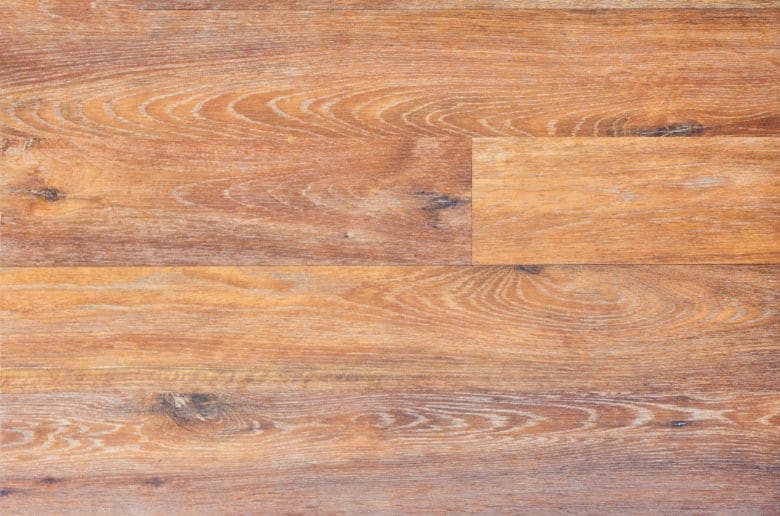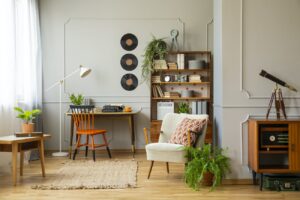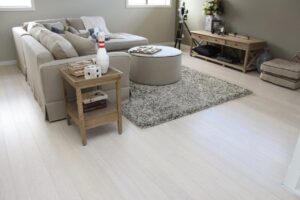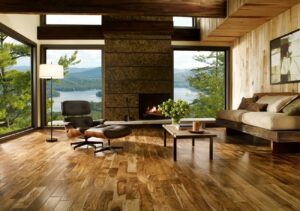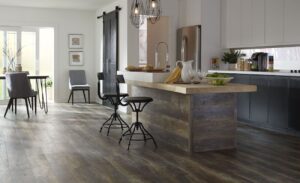Birch hardwood flooring encapsulates both warmth and resilience, presenting homeowners with a viable option that balances cost with aesthetics. Delving into its characteristics reveals why discernment is key in material choice, especially for areas underfoot.
With birch, one encounters a spectrum from the golden hues of yellow birch to the deep richness of red birch, each with applications that celebrate their innate beauty and functional merits.
Our discussion ahead promises a thorough examination, weighing the pros and cons to furnish our readers with the insights needed for informed decisions on birch flooring.
Pros of Birch Hardwood Flooring
Birch hardwood flooring is renowned for its unique combination of beauty and brawn, offering a host of benefits for homes and commercial spaces alike.
Aesthetic Appeal
Birch floors shine in their aesthetic diversity, presenting a spectrum of colors from the subtle yellows to the rich ambers of red birch.
The wood’s natural grain patterns contribute a touch of elegance to any room, providing a classic yet distinct look that complements a variety of interior designs.
Homeowners cherish the soft feel underfoot, which brings an additional layer of comfort to birch’s visual charm.
- Color Varieties: Birch offers a spectrum from pale yellows to deep reds.
- Grain Patterns: The unique patterns add sophistication to interiors.
- Comfort: A naturally softer hardwood, it enhances underfoot comfort.
Durability and Longevity
Despite its soft touch, birch’s resilience is remarkable, thanks to its respectable position on the Janka hardness scale.
It withstands foot traffic and daily wear gracefully, making it a strong contender against other hardwoods in its price bracket.
- Janka Rating: Birch holds a competitive Janka hardness rating.
- Traffic Resilience: Capable of enduring heavy foot traffic.
- Price-Range Comparison: Offers durability at a more affordable price compared to similar hardwoods.
Ease of Installation and Workability
Installers find birch to be a cooperative material, aligning with the needs of both seasoned professionals and DIY enthusiasts.
Its machinability allows for a seamless experience with sanding, nailing, and finishing, which ensures a streamlined installation process.
- Installation Friendly: Birch’s workability makes it ideal for various projects.
- DIY Benefits: The wood is user-friendly for those preferring to install their own flooring.
- Machinability: Easy to machine with standard tools for a flawless finish.
Economical and Environmental Factors
Budget-conscious buyers will appreciate birch for its cost-effectiveness without compromising on quality.
The rapid growth cycle of birch trees contributes to its eco-friendly profile, and the minimal maintenance it requires is a boon for those seeking a low-cost, sustainable flooring solution.
- Cost-Effectiveness: Birch offers an attractive price point.
- Sustainability: The wood comes from a rapidly renewable resource.
- Low Maintenance: Birch floors require minimal upkeep to maintain their allure.
Important Note: While birch is more affordable than many hardwoods, it does not sacrifice durability or style, making it an exceptional value for the investment.
Cons of Birch Hardwood Flooring
While birch flooring offers many advantages, it’s important to consider its potential drawbacks to ensure informed decisions are made.
Challenges in Durability
Birch, although a hardwood flooring, may not always stand up to the rigors of high-impact activities and can show signs of wear such as scratches and dents.
When compared to denser hardwoods, birch might not offer the same level of endurance against heavyweight pressures.
- Scratch and Dent Potential: Prone to visible marks from everyday use.
- Pressure Limitations: Less capable of handling extreme weight without damage.
- Hardwood Comparison: Falls short when matched against tougher hardwood species.
Installation and Maintenance Considerations
The beauty of birch can be marred by its sensitivity to moisture, which can cause gapping and warping.
It requires regular treatments to maintain its stability and appearance, adding to the maintenance effort over time.
- Moisture Instability: Susceptible to environmental changes.
- Warping Risk: Increased tendency to warp if exposed to moisture.
- Treatment Needs: Regular sealing or finishing required to protect against moisture.
Aesthetic and Customization Limitations
The natural color variations in birch planks can challenge those seeking uniformity in their flooring.
While birch wood does stain, it may not always achieve the desired coloration, presenting limitations for customization.
- Uniformity Issues: Varied hues can disrupt the flow of flooring.
- Staining Challenges: Birch does not always take to stains evenly.
- Natural Beauty vs. Customization: A delicate balance is needed to enhance its innate appeal without diminishing it.
Important Note: The allure of birch flooring’s natural look is sometimes at odds with customization efforts, which may not always yield the expected results and can potentially detract from the wood’s inherent beauty.
Conclusion
Birch hardwood flooring captivates with its aesthetic warmth and functional longevity, offering homeowners a compelling mix of beauty and resilience.
We recognize the need for thorough deliberation on the part of homeowners, given the material’s response to environmental factors and usage demands.
Our final counsel for those contemplating birch is to weigh its charming allure against the practicalities of their lifestyle and maintenance commitment. Informed choices pave the way to satisfaction with this attractive flooring option.
